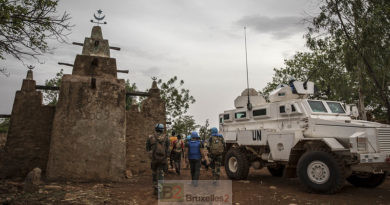Humanitarian operations – The 27 want to encourage the use of civil protection forces
(B2 - archives) " The use of military and civil defense resources in humanitarian or disaster relief operations has always sparked debate within Member States and at international level. In view of the November 28, 2007 meeting of the Advisory Group of the United Nations Office for the Coordination of Humanitarian Affairs (OCHA), the 27 Foreign Ministers and their Defense counterparts are expected to approve, on November 19, an "approach to 'together' of EU Member States on the revision of the 'Oslo guidelines' governing disaster relief operations.
Three questions are essentially posed. Should international disaster relief or humanitarian operations encompass civil defense (derived from international humanitarian law) or civil protection (fire or rescue services)? Civil protection forces, which are identified as government forces, and therefore do not meet the criteria of neutrality and impartiality according to the UN, should they be used only "in the event of a last resort", it is that is, for lack of other means? Can these personnel be armed?
Review Oslo guidelines
The EU delegations consider it necessary to revise the Oslo directives in order to make them “more appropriate” and to encompass both civil defence, civil protection and the military dimension. In particular, they consider that civil protection should not intervene as a "last resort", nor should it only play a supporting role whose only priority would be infrastructure support and indirect assistance ". It is only for the use of " military resources » that the principle of « last resort should be used.
In their view, civil protection should thus " be understood as a tool to provide assistance whenever the need arises and should be complementary to general humanitarian assistance ". Its intervention should be governed by a series of principles, stemming from humanitarian action — humanity, impartiality, neutrality, independence, exercise by unarmed personnel — and its response centered on the emergency phase.
(Nicolas Gros-Verheyde)
Civil protection in Europe. Regardless of the ministry to which it depends, civil protection is placed under civilian command and its personnel never carry arms. It generally depends on the Ministry of the Interior (19 States), sometimes on defense (Denmark, Slovenia and Sweden), more rarely on other ministries: environment and local administrations (Ireland), disasters (Bulgaria), regional development ( Hungary), Prime Minister's Office (Italy) jointly with the Home Office (UK).
article published in Europolitics on 14 November 2007

